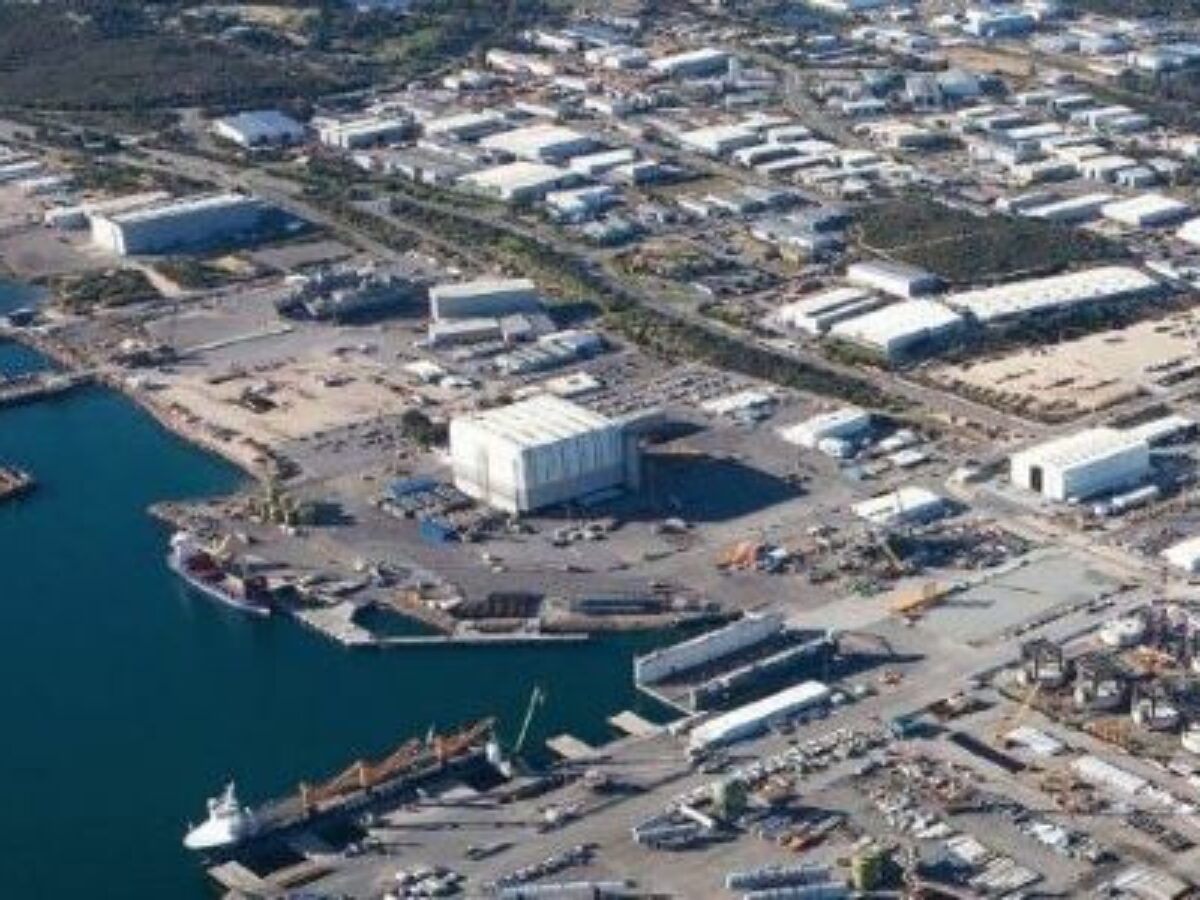Celebrating Australian sovereign capability – report card on our capability sectors

Yesterday in our series – Celebrating Australian sovereign capability – Lance Worrall argued that sovereign capability is about a nation making things it needs, and policy with purpose. Today he identifies Australia’s priority sovereign capability sectors, and reveals where we are falling short.
Over 30 years Australia overdosed on neoliberalism. The patient’s disorders include deindustrialisation and a corresponding depletion of the resources required for a sovereign-capable Australia.
Unwinding a previous century of industrialisation and progress led to a flourishing of rent-seeking and resource extraction, finance and real estate, over productive activity.
Future progress means revaluing the role of government and the elevation of public purpose.
A National Reconstruction Fund (NRF) is before Parliament. It is a very positive part of the solution, but not the whole of it.
Where do we stand today?
Defence
Defence, particularly naval shipbuilding, is the exception to Australia’s otherwise categorical rejection of industrial policy – the only industry warranting a dedicated sectoral policy, on sovereign capability grounds.
The policy comprises largescale advanced procurement practices, domestic industry participation targets, and mission oriented projects for new technology, product and process development.
The policy understands that defence comprises complex value chains with key required capabilities in foreign-owned multinational corporations (MNCs).
This means getting them to base a high minimum of their production here, together with commitments to share IP and collaborate across the local value chain and with research providers, etc.
Nevertheless there is pressure to dilute these strategic aims, including a shift to ‘access to’ or ‘control over’ (imported) designs, technology and equipment, juxtaposed to the requirement for local manufacture.
This juxtaposition is usually spurious because operational and field capabilities depend significantly on industrial capabilities and on local production.
Operational capability often will be restricted by lack of knowledge about how a component or system works when imported off the shelf.
There are no mandated levels of Australian industry content on major projects but targets apply to the percentage of Australian content in the project’s total dollar value.
Frequently there is slippage. There is contractor underperformance and opportunity to shift focus to basic production, allowing default to imported designs, IP, and critical technologies.
The Morrison government’s upending of the agreement with France in favour of nuclear powered submarines has enlarged the nation’s defence capability gap.
Australia’s sovereign defence industrial capability is low-medium, with eyes now on directions from the Defence Strategic Review to be released in March.
Based on the identified priorities Australia should aim for:
- Stronger capability in priority areas, especially shipbuilding
- Stronger mandated quantitative measures of Australian content, reinforced against avoidance and underperformance
- And strategic qualitative indicators targeting value chain elements decisive for sovereignty, such as design, systems integration, and IP.
Resources and energy
The mirror-opposite of the nation’s stated defence goals, Australia’s industrial capability to use its resources to secure our sovereign interests is low.
Australia is today an exporter of unprocessed raw materials for offshore value-adding, alongside maximum import reliance for upstream plant, equipment and technology, with domination by overseas owned and revenue-repatriating MNCs.
We have lost capacity to process our own mineral and energy resources, dramatically reducing Australia’s sovereign capability, energy self-sufficiency, and the ability to make strategically important goods. It is a dismal balance sheet of neglect.
These productive losses span secondary processing of ‘traditional’ ores into steel and aluminium, and failure to develop ‘new’ minerals critical to decarbonisation, which Australia has in abundance: lithium, nickel, copper, silicon, graphene, cobalt, vanadium, and titanium.
Australia’s vast renewable wind and solar energy sources should power reindustrialisation and manufacture of energy-intensive low carbon materials basic to national sovereignty: green steel and aluminium, and minerals that provide critical inputs to production of renewable energy such as lithium ion batteries, solar panels and wind turbines.
Renewables are the most ‘sovereign’ energy source. They are not imported. They are not depleted on extraction. They can make Australia energy self-sufficient.
Australia should aim for:
- Energy self-sufficiency
- Self-sufficiency in steel, aluminium and other basic metals using energy-intensive carbon-free production
- Secondary processing in new materials: rare earths for electric motors, computer hard drives and touch screens, titanium for medical devices, lithium for battery technology, copper, nickel, cobalt, vanadium, etc.
- A national strategy for secondary processing, value-adding and value chain development
- And negotiated agreements with MNCs and large Australian firms, sector plans, conditional foreign investment with value-adding and joint venture provisions, etc.
Health
Although Australia has a strong healthcare services and research sector, with public provision its backbone, our industrial sovereign capability is low.
The pandemic drove this home. Australia has lost productive capability in pharmaceuticals. Some leading MNCs and Australian-owned companies are present but with only limited productive capacity and capability.
Australia should aim for:
- National agreements with key MNCs for local production and R&D, with more Australian businesses supplying health equipment, medical devices, and pharmaceuticals
- And onshore manufacturing of medical devices, PPE, pharmaceuticals and other essential supplies to meet the nation’s critical needs.
Science, communications and technology (SCT)
Across SCT Australia has low industrial capability. Research capabilities (universities, CSIRO) are frequently high, but exist in a national policy vacuum and a weak industrial ecosystem, seldom going beyond early-stage commercialisation.
SCT capabilities help determine overall cyber security, and defences against natural or human threats to Australian defence and communications systems, our biological, chemical, food and water security, and ability to respond to climate events.
Australia should aim for:
- Sovereign cloud capabilities for secure storage data on behalf of Australian citizens, infrastructure and businesses
- Capability development for AI, machine learning and autonomous systems
- And mission-oriented institutions focussed on development of sovereign capabilities, and of maximising chances of Australian development and production of research outcomes onshore, beyond commercialisation and sale of IP offshore (as occurred in Wi-Fi).
Manufacturing
Manufacturing is indispensable to national sovereign capability. Australia’s manufacturing capabilities are low.
Manufacturing provides the requisite productive capabilities to all other sovereign goals: value-adding to Australian raw materials, sustainable energy technologies, processing advanced materials for the future economy, critical inputs for other sectors (mining and energy, defence), and making pharmaceuticals and medical devices.
Australia should aim for:
- A national industrial strategy
- And building onshore verticals within which Australian manufacturers supply key equipment, services and technologies to these sovereign capability industry domains, forming a virtuous cycle.
Note: Many of these themes are expanded on in a report the author worked on for the Australian Industrial Transformation Institute (Flinders University), <ahref=”https://www.flinders.edu.au/content/dam/documents/research/aiti/Australian_sovereign_capability_and_supply_chain_resilience.pdf”>‘Australian Sovereign Capability and Supply Chain Resilience’.
Further reading:
CELEBRATING AUSTRALIAN SOVEREIGN CAPABILITY – SOVEREIGN CAPABILITY AND HOW TO GET IT
Also today:
Lance Worrall was Economic Adviser to Mike Rann as both Opposition Leader and Premier of South Australia. He has been a public sector Chief Executive and has most recently worked on industrial transformation initiatives for the Innovative Manufacturing CRC and Flinders University. He is the author of significant analyses in political economy and economic-and-industry-development.
Also in our series today:
CELEBRATING AUSTRALIAN SOVEREIGN CAPABILITY – HOW COVID CREATED OPPORTUNITY FOR KEY TUBING AND ELECTRICAL
Picture: Australian Marine Complex Henderson, WA – naval shipbuilding is the exception to Australia’s otherwise categorical rejection of industrial policy
@AuManufacturing’s editorial series – Celebrating Australian sovereign capability – is brought to you with the support of Nova Systems and Titomic.
@aumanufacturing Sections
Analysis and Commentary Awards Defence Manufacturing News Podcast Technology Videos












